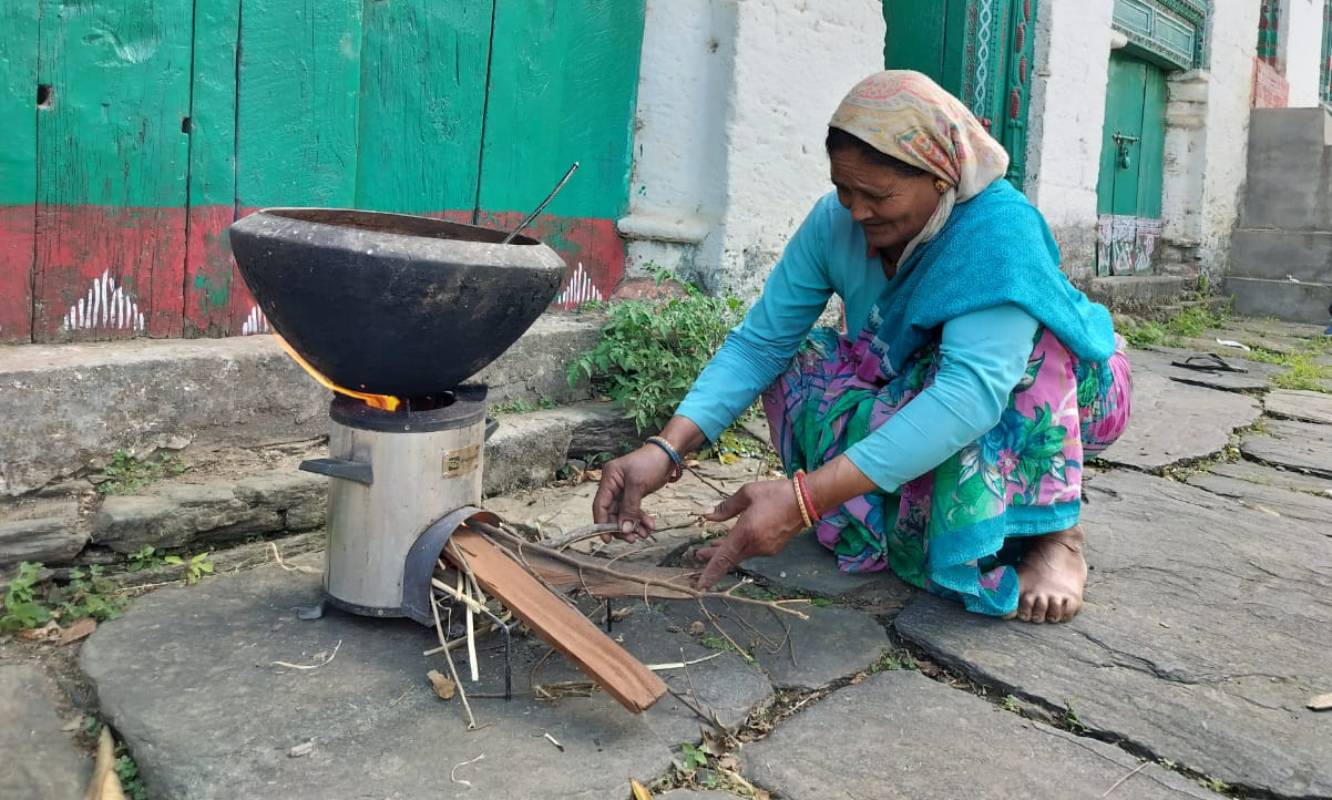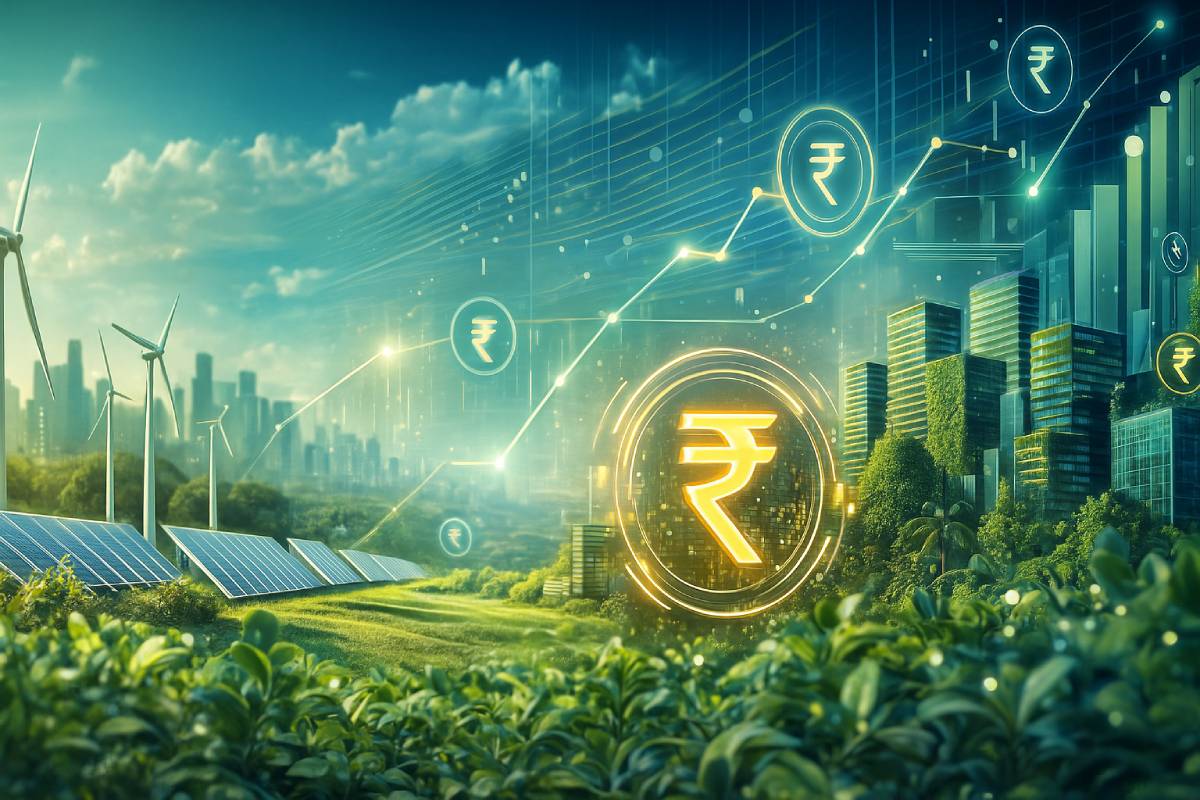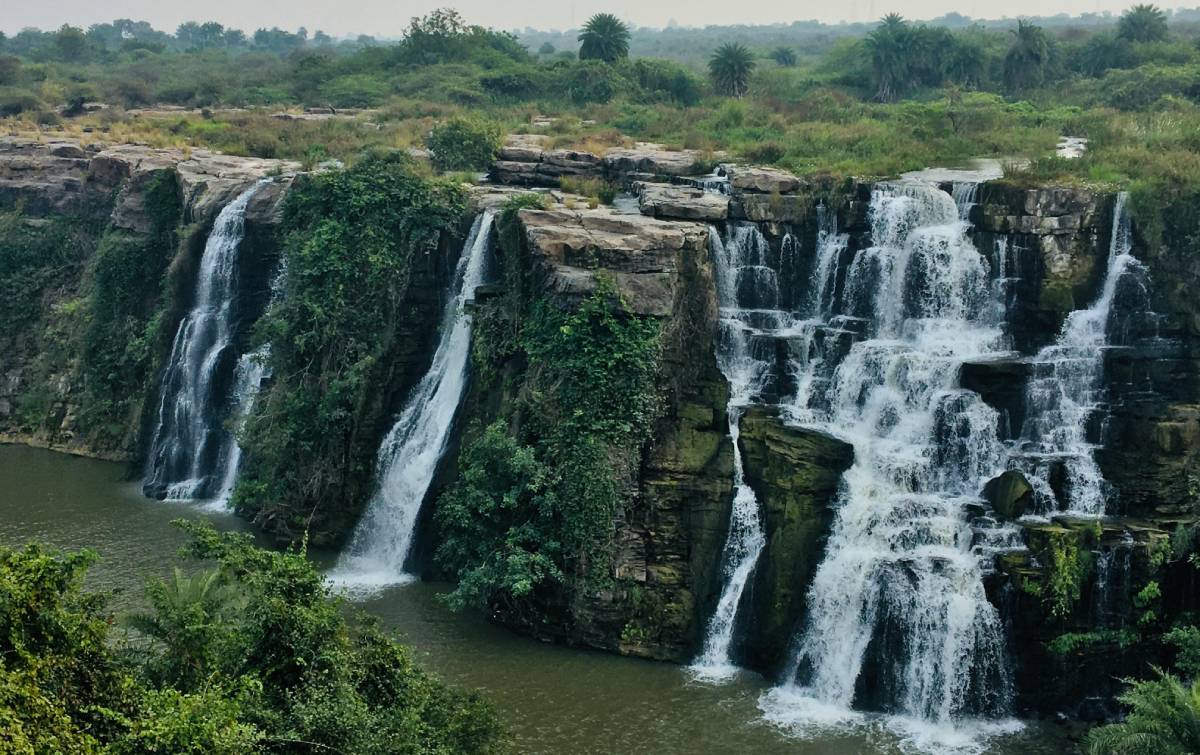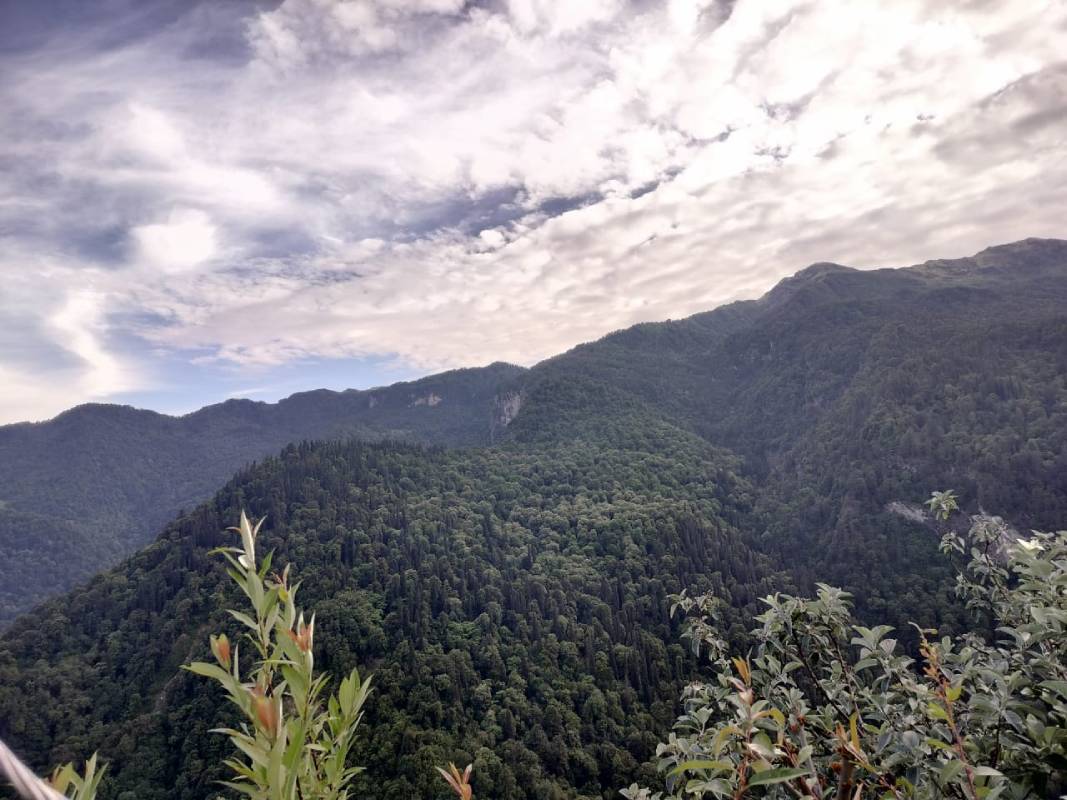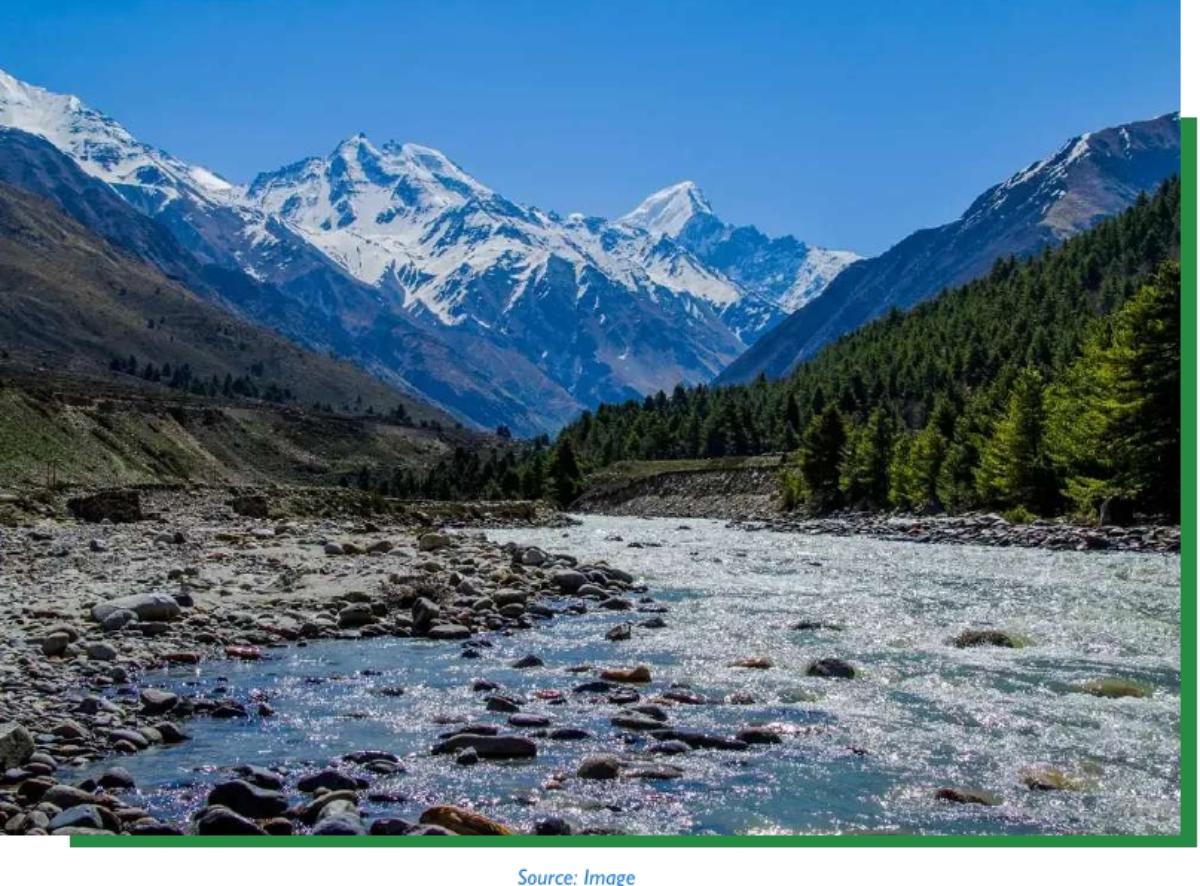It is evident that the economic growth in all Himalayan states and UTs in the last two and half decades has not led to improving social, economic and ecological well being. Moreover, the increasing unemployment/under-employment, rapidly depleting natural wealth and increasing social unrest, leads one to question its sustainability. Based on this observation, a radically new strategy for addressing these is required. The Business as Usual (BAU) strategies put macroeconomic GDP growth first, then worry about human development and well-being, and finally pay some residual attention to environmental aspects. We assert that the triad of employment crises requires us to adopt a radically different developmental strategy, which reverses the normal economic priorities. We need to put nature first, then human beings and then GDP growth.
We call this growth strategy Nature-regenerating, Enabling human, social and institutional development and Well-th (well-being not just income) enhancing, which makes the acronym NEW. As against the current strategy, which is exploitative of both nature and human beings, the new strategy nurtures both nature and human beings.
Nature Regeneration
Invest in regenerating nature and conserving the environment: jal, jangal, jameen and jalvayu (land, forests, water and the climate) need to be regenerated, for reviving the agriculture and allied sectors. New green activities such as generation of renewable energy, recycling of waste, and climate-change adaptive construction and services, eco-tourism, etc. will have to be taken up in a big way. These will lead to the setting up of many nature-care enterprises. Nature regeneration interventions required in the western Himalayan regions are as follows
| Sectors | Interventions |
| Surface and Ground water conservation | River rejuvenation – treatment of river basin other than forest area |
| Restoration of defunct water bodies | |
| Restoration of damaged water bodies | |
| Monitoring and Research on Glaciers and Expansion of Glacial Lakes | |
| Contour Trench | |
| New Check Dams | |
| New Percolation Tanks | |
| Chal-Khal (traditional water sources) revival using women’s self-help groups and MGNREGA funds | |
| Springshed Restoration | |
| Regeneration of Forest Commons | Regreening of Open/scrub forest land through agro-forestry and planted forestsby Eco-Task Force type of formations comprised of local people |
| Restoring Moderately Dense forest forests – mainly through assisted natural regeneration | |
| Forest fire Control Measures in Fire prone forestsand formation of local Forest Fire Protection Committees | |
| Land and Soil | Treatment of land affected by water erosionusing MGNREGA funds |
| Restoration of soil nutrients in single cropped land | |
| Restoration of soil nutrients in multiple cropped land |
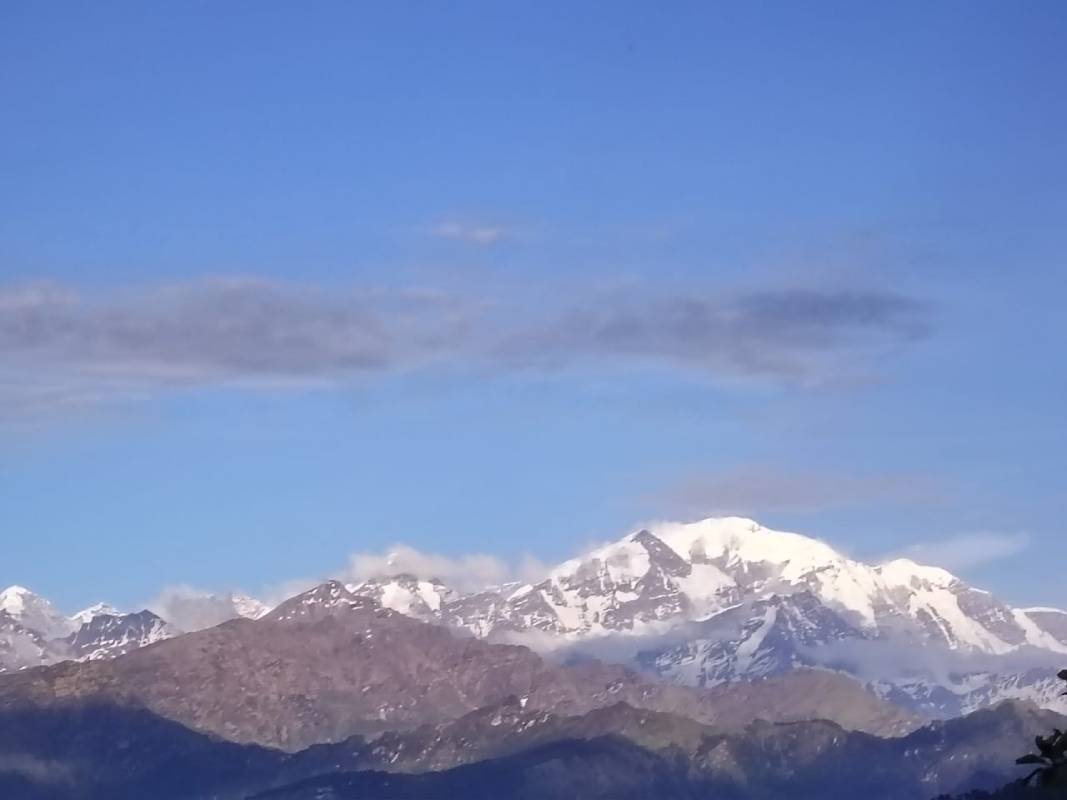
The message is clear: both the natural and social environments are at a serious level of deterioration and require urgent action for regeneration/revival. There are five levels at which action will have to be taken:
- Individuals by themselves; as citizens, as activists, as thinkers and influencers
- Individuals by joining local community Social Groups; and by individuals joining organised NGOs/Civil Society Institutions
- Gram Panchayats/Zilla Parishads/Town Wards / Municipalities
- State and Central Government departments and specialised agencies
- International Cooperation at the Regional and Global level
We give below some suggestions for action at each of these levels, broadly covering environmental, social, and economic aspects.
Individual Actions
Every individual will have to become mindful of their ecological footprint, in terms of Greenhouse Gas (GHG) emissions contributing to global warming and in other ways in which we damage the environment – whether by excessive use of fossil fuel energy, for heating or transportation, or by polluting the environment with untreated effluents and solid waste. While it may appear that the contribution of each individual is miniscule and cannot make a difference to large trends like global warming, we must recognise that the effect of our individual actions gets multiplied by the population of the village/district/state or country. So at the level of India, each ton of carbon emissions saved by an individual over a year will add up to 1.5 billion tons of carbon dioxide emission reduction.
There are two ways in which individuals can impact the environment – first by cutting their own emissions and second by persuading others to do so. For example if the individual is a rice farmer, she should adopt techniques such as system of rice intensification (SRI) which, involves cultivating rice with as much organic manure as possible, starting with young seedlings planted singly at wider spacing in a square pattern; and with intermittent irrigation that keeps the soil moist but not inundated, and frequent inter cultivation with a weeder that actively aerates the soil.
Another environmental action that the farmers of Western Himalayas can take is to ensure that no land is left fallow or unused in their small farms. As per land use data, as much as 23% of cultivable land is at present not cultivated. Using water harvesting structures and polyhouses can obviate some of the causes for keeping land unused.
Another major individual action can be by adopting a largely vegetarian diet since meat based food requires a lot more energy and its production emits a lot more methane from animal excreta. To the extent animal dung is produced, it should be used in bio-digesters where the methane can be used as fuel. Methane is 84 times more harmful than carbon dioxide in a 20 year period. Methane is the second most important greenhouse gas contributor to climate change, after carbon dioxide and accounts for about 16% of emissions. For those who keep cattle for dairy purposes, setting up a biogas plant would both benefit the environment, as also lead to savings on purchase of kerosene, LPG or fuelwood.
Individuals living near forests should ensure that forest fires do not get started due to rash actions, which would be an important contribution. Not only do these fires damage the forest where the fire burns, but the ashes get deposited over the glaciers and cause those to melt much faster due to greater heat absorption.
Social Groups, NGOs and Civil Society Institutions
Individuals can be more effective by joining environmental action groups / NGOs to undertake clean ups of solid waste, tree plantation and spreading awareness. These groups can also be used to influence organised public systems such as panchayats and municipalities to do more for conserving the environment such as banning leaf fall burning, composing food and organic waste, recycling plastic and other solid waste, treating sewage with minimum methane emissions, prohibiting dumping of solid waste and sewage in rivers, establishing green belts, renovating water bodies for water harvesting and recharging groundwater. Polluting industries should be taken to task and citizens should report them.
By and large, developmental efforts have been government led and supply/scheme driven. As a result, these have not been very effective. A different kind of social mobilization is needed when the goal is developmental rather than welfare delivery. Demand side has to be strengthened by bringing people into different interest or specific-function groups. Among these, Women’s Self-Help Groups (SHGs) and specific-function groups such as Climate Change Action Committees, Forest Protection Committees, Watershed Management Committees and School Management Committees can be formed/strengthened in rural areas. In urban areas, Resident Welfare Associations, Town Market Committees and Hospital Management Committees can be formed/strengthened as the building blocks of citizen participation.
While Uttarakhand has had a vibrant tradition of civil society institutions, this is less so in the other three states. In any case, most of those institutionsare now very short of resources. They need to develop revenue models for their work. For example, taking advantage of the fact that crores of people from all over India for pilgrimage, and lakhs visit the cool climate and scenic beauty, Paryavaran Bodh Kendras (Environmental Awareness Centres) can be established every 20-30 kms along the pilgrimage and tourist routes to educate people about the environmental crises facing us and what can be done about it at the individual and collective level.
It can amplify the message of Mission LiFE, which means ‘Lifestyle For Environment’.[1] This can help build a mass movement towards an environmentally conscious lifestyle. Revenue can be generated from these Kendras through small visitor fees, sale of souvenirs and serving local cuisine as well as cuisine from various parts of the country. This revenue can be used by Civil Society Institutions to carry out various other social and environmental activities.
Gram Panchayats/Zilla Parishads/Municipalities
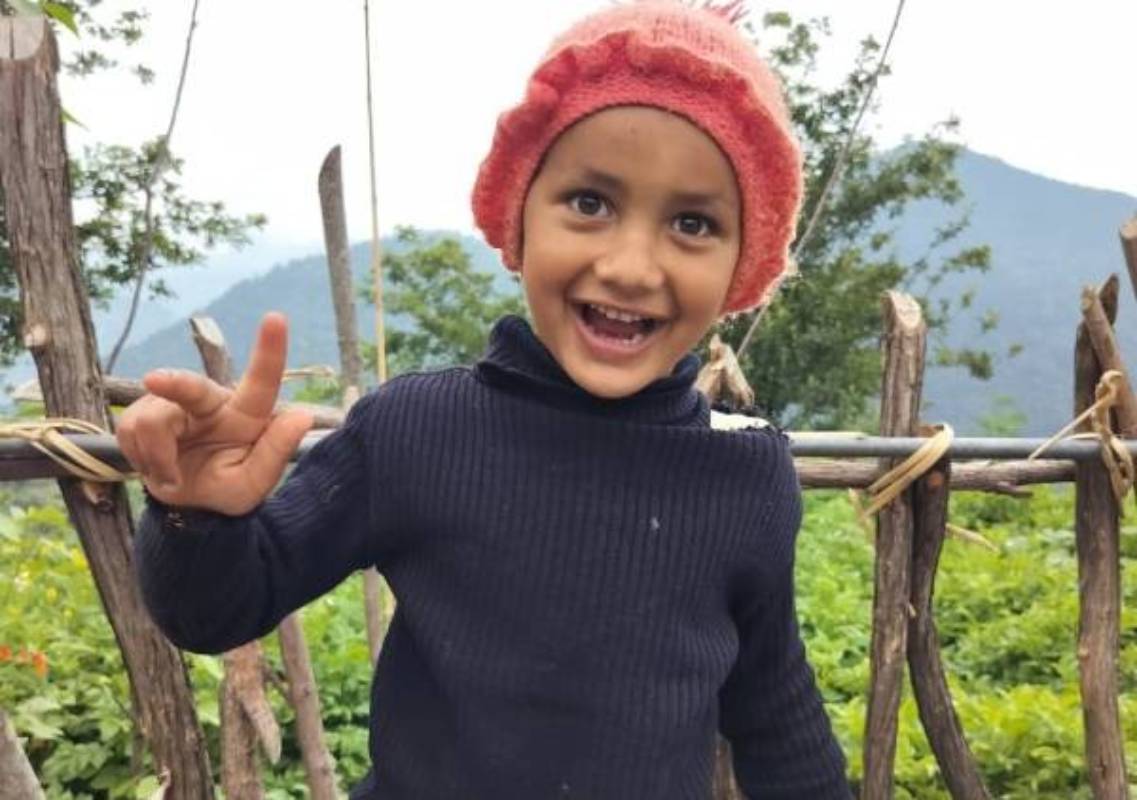
Public representative bodies such as Gram Panchayats and Zilla Parishads need to do more for conserving the environment. Under the 11th Schedule of the 73rd Amendment to the Constitution, PRIs have been assigned the function of taking care of the basic natural resources of the village – jal, jangal, jameen – or water, forest and land. They also get funds under the Integrated Watershed Management Program and the MGNREG Program to undertake projects to conserve or regenerate these natural resources, which are critical for the livelihoods of the rural population and indirectly even for the urban population as many of these resources (or their absence) affects urban populations too.
As part of the Panchayat Development Plans (PDP)[i], each panchayat should make a comprehensive five year plan for regenerating their water, forest and land resources in their jurisdiction and they must be required to submit a report on the progress made.
Likewise, under the 12th Schedule of the 74rd Amendment to the Constitution, Urban local bodies or Municipalities have been assigned the function of taking care of land use planning, water supply, sanitation, solid waste management and public health. They must thus prohibit dumping of solid waste, sewage and untreated industrial effluent in rivers and ban leaf fall burning. They must encourage composing food and organic waste, recycling plastic and other solid waste, treating sewage, establishing green belts, renovating water bodies for water harvesting and recharging groundwater.
They receive funds for these activities under the Swacch Bharat Mission and have been empowered to impose fines and take other civic action to prevent environmental damage. Each ULB should be required to come up with a five year City Development Plan[ii], as was done under the Jawaharlal Nehru National Urban Renewal Mission (JNNURM) in 2009-10, for the land and water resources and infrastructure development for public services in their jurisdiction and they must be required to submit a report on the progress made.
State and Central Governments
Since the 1972 United Nations Conference on the Human Environment in Stockholm, a lot of progress has been made in environmental knowledge, legislation, regulation and preventive and promotional programs. Yet the fact of the matter is that the overall environmental situation has deteriorated since then. This may be due to the rising population, multiplied by rising per capita consumption levels and one could ask counter-factually what the situation would be if even the extant environmental knowledge, legislation and regulation was not there. Be that as it may, additional efforts will have to be made, and urgently to tackle the environmental crisis, both of global warming triggered climate change as also pollution and degradation caused by human and industrial activity.
The biggest issue is to develop a value for the long-term, inter-generational and “across all species” view of what is good, to replace the dominant short-term, “après moi le déluge”, anthropocentric view. This requires more than knowledge – at least more than scientific and economic knowledge – it requires a different world view which values the natural over the man-made, spiritual over material progress and communitarian over individual prosperity. It requires the kind of thinking that Gandhi did in the Hind Swaraj in 1909, EF Schumacher did in Small is Beautiful – Economic as if People Mattered” in 1973 and what Gro Harlem Brundtland did in 1987 in the report “Our Common Future – From One Earth to One World.
The Central Government would have to significantly shift its policies from maintaining status quo as far as possible to championing change, as it has done in some aspects such as adoption of renewable energy. The fact that over 46% of India’s energy generation capacity is now from renewable sources, though in terms of actual generation it is still only 22% is a good example. By dragging its feet over transition from coal, the Indian government wants to be on both sides of the fence.
By adopting 2070 as the date when India will become net zero in GHG emissions, when in 2024, the Earth has breached the 1.5 Celsius mark for global warming, India lost its moral standing while arguing for more funds for mitigation and adaptation at the COP29 at Baku recently for example. No amount of preaching adoption of an environmentally conscious lifestyle under the Mission LiFE cuts no ice in front of the fact that India is now the third largest emitter of GHGs. While we should continue to fight for climate justice, we cannot continue to add to the problems. It is our common future after all.
The state governments have an important role to play both as key implementers of these programs as well as closer to the ground monitors of the environmental situation. For this they have to get off the view that higher GSDP growth rate is an unmitigated virtue. They must assess every growth proposal for what it does to the environment and what it does for jobs. The Environmental Impact Assessment reports should not be seen as mere formalities that have to be gone through to expedite “development”, not should environmental activists be dubbed as anti-development. In addition the state pollution control boards need to be better equipped and empowered to monitor and if necessary penalise polluters. Investments in municipal and panchayat capacity in solid waste management and sewage and drainage, must be made.
International Cooperation – Regional and Global
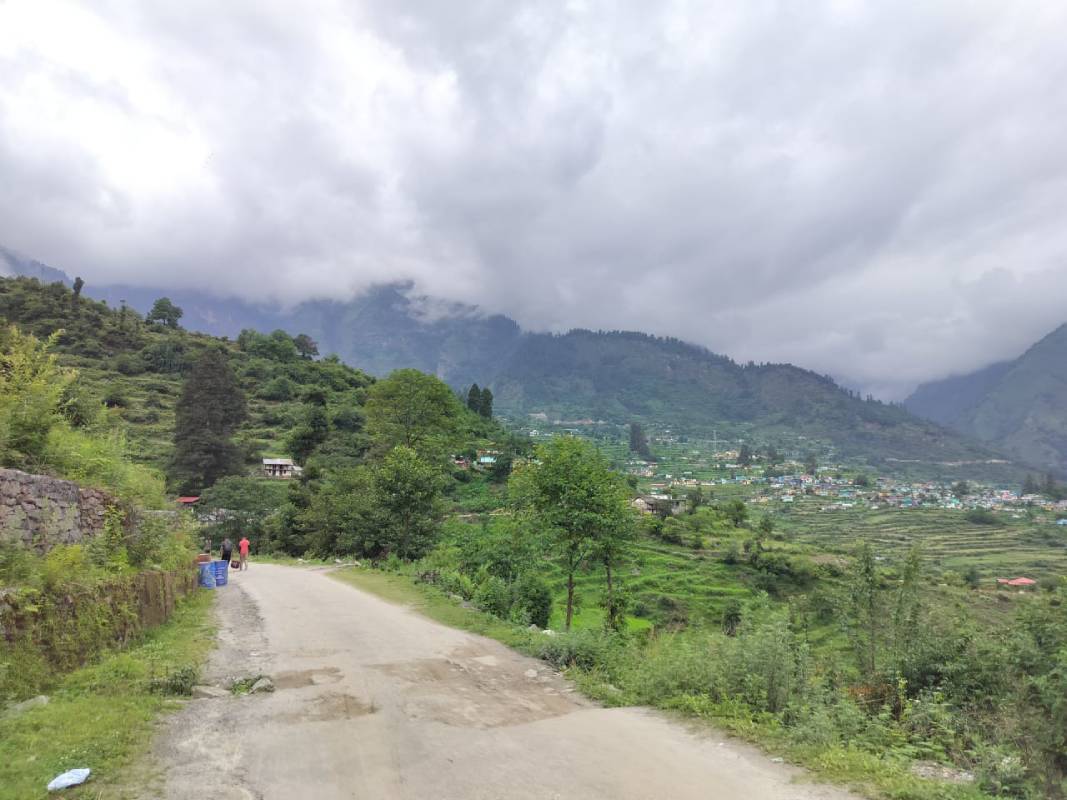
Many of the problems of India’s hill states are beyond their control and require not just support from the Central Government, but in some cases, most notably climate change, need international support. There are some issues such as water sharing of transnational rivers, which require regional cooperation.
Natural phenomena do not know humanly drawn boundaries. Climate change sweeps across national borders, just as cyclones and hailstorms, heat waves and earthquake tremors cross these without a visa. It becomes necessary therefore to seek international cooperation – in monitoring, research, in prevention and mitigation where possible, and in disaster relief when adverse events do happen.
The most evident case for regional cooperation is about sharing of waters which flow across countries. Tibet is regarded as the roof of the world, is the source of two major south west flowing rivers – Indus and Sutlej and three east/southeast flowing rivers – Yangtze, Brahmaputra and Mekong. The Tibetan plateau frequently experiences earthquakes as it is located over the tectonic plates. Construction of major dams by China, such as the Three Gorges dam and recently approved what will be the “largest dam in the world” on the Brahmaputra close to the Indian border[iii], can disrupt the seismic balance of the fragile Himalayan range.
Similarly, in the Western Himalayas, Ladakh and J&K have rivers which originate in the Tibetan plateau and Uttarakhand has rivers entering from Nepal such as Kali and Sharda are major rivers in the Kumaon region flowing from Nepal. In these cases, India is the lower riparian state and thus must seek cooperation from China and Nepal. But in the case of the Teesta and the Ganga rivers, as also the Brahmaputra, which flow into Bangladesh, India is the upper riparian state and needs to negotiate water use with that country. The much talked of the Indus Water Treaty of 1960 between India and Pakistan was hailed as an example of international cooperation and accommodation, though it has been re-examined now on the ground that India yielded too much.
These issues will have to be resolved through regional cooperation. India, for example, can use the Shanghai Cooperation Organisation (SCO) as a forum where it can raise the issue of the appropriate treatment of the Tibetan Plateau on environmental grounds.[iv]
Due to the impact of global warming, many of the glaciers, which are critical freshwater resources, are rapidly melting. According to the IPCC, “the Hindu Kush Himalaya could face the potential loss of more than two-thirds of Himalayan glaciers by the end of this century. The UN declared 2025 as the International Year of Glaciers’ Preservation an international conference is going to be held on the topic in Tajikistan starting 29 May 2025.
As the conference announcement [v]says: “The ultimate objective is to ensure that individuals reliant on glaciers and snow, as well as those directly impacted by the Earth’s cryospheric processes, receive hydrological, meteorological, and climate services specifically tailored to their needs. These services should acknowledge the vital role of mountain regions as the cradle of the cryosphere and the primary source of global freshwater and ecosystem services for the entire world. “The Government of India must send a strong delegation comprising scientific, administrative and political leaders to learn from the international deliberations on this topic.
[1]https://www.niti.gov.in/sites/default/files/2022-11/Mission_LiFE_Brochure.pdf
[i]People’s Plan Campaign https://gpdp.nic.in/
[ii] City Development Plan Toolkit. https://localbodies.up.nic.in/Toolkit/CDP.pdf
[iii]https://www.thehindu.com/news/international/china-defends-plan-to-build-worlds-largest-dam-over-brahmaputra-river-in-tibet-says-will-not-affect-lower-reaches/
[iv]The SCO is an intergovernmental organization founded in 1996 by China, Kazakhstan, Kyrgyzstan, Russia, Tajikistan, and Uzbekistan to encourage regional cooperation. India was granted observer status in 2005 and became a full member in 2017. In 2022,India served as the President of the SCO.
[v]International Conference on Glaciers’ Preservation, 2025 https://sdgs.un.org/partnerships/international-conference-glaciers-preservation-2025

